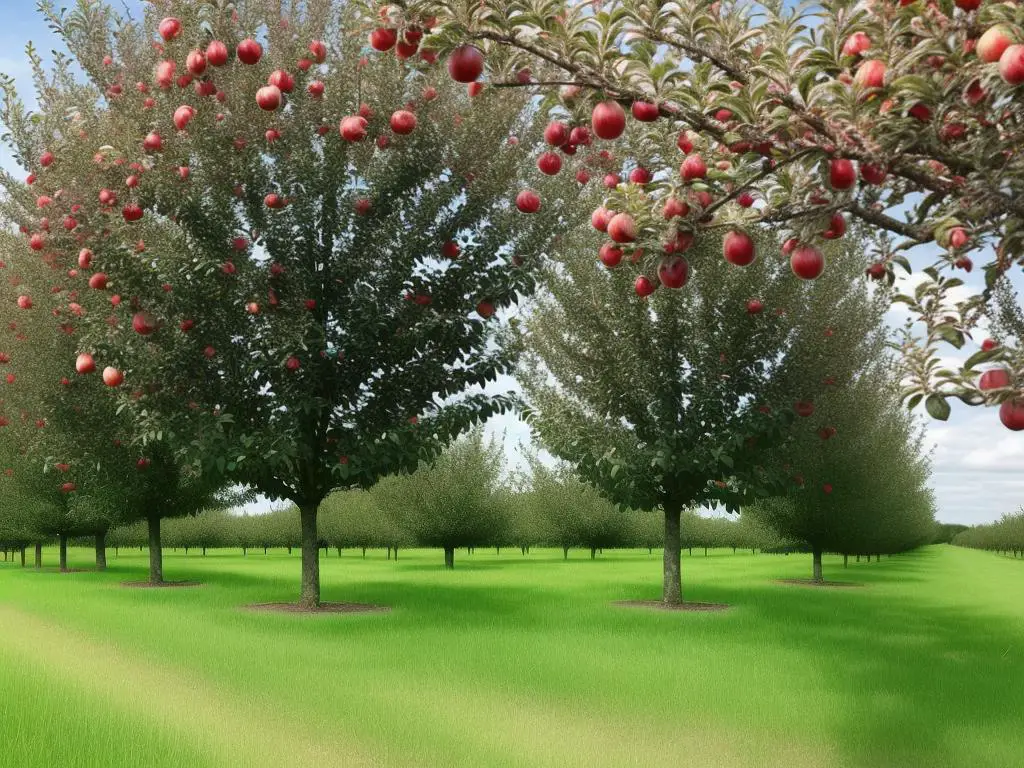Strong, healthy, and productive apple trees are results of a combination of factors such as suitable climate, quality soil, and meticulous care. Indeed, one of the most vital maintenance tasks dedicated apple growers should undertake is pruning. Not only does this practice shape and train young trees, but it also improves the health, productivity, and lifespan of established trees. This guide aims to equip readers with in-depth knowledge about apple trees, the importance and benefits of pruning, the best timing for pruning, effective techniques, safety considerations, and subsequent care and maintenance.
Understanding Apple Trees
Understanding Growth Patterns of Apple Trees
Apple trees follow cyclical patterns of growth with much of their active growth transpiring in the spring and early summer months. During this period, it draws upon its own reserves to spur leaf, flower, and eventually fruit development. By mid-summer, the tree slows its growth and focuses energy on fruit-thickening. In late summer and autumn, the tree moves nutrients to its storage compartments in the roots, preparing for the dormant winter period. Understanding this pattern helps in timing pruning efforts for optimal tree health and productivity.
The Importance of Pruning Apple Trees
Pruning is a critical maintenance task for apple trees. It helps control the size and shape of the tree, improves sunlight penetration and air circulation within its canopy, minimizes the risk of disease and pest infestation, reduces the likelihood of branch breakage from a weighty fruit load, and encourages higher fruit quality. Pruning also revitalizes older trees, stimulating new growth and helping to balance fruit production and vegetative growth.
Common Types of Apple Trees
Several varieties of apple trees are commonly grown domestically, each of which may have slightly different pruning needs based on their growth habit. Some popular varieties include ‘McIntosh’, known for its tart flavor and used mostly for baking; ‘Golden Delicious’, a yellow-skinned variety used for both baking and fresh eating; and ‘Red Delicious’, famous for its uniquely elongated and lobed fruits. Understanding their specific growth habits can guide the pruning process, leading to richer yields and healthier trees.
Best Time to Prune Apple Trees
The best time to prune apple trees typically falls in late winter or very early spring, when the tree is still dormant but just before new growth starts. During this period, the tree is not actively growing, making it less likely to suffer stress or harm from pruning. Also, with leaves absent, the structure of the tree is clearly visible, making it easier to make strategic, clean cuts. Pruning just before spring also allows for a swift healing of pruning wounds once the growing season commences. Caution should be exercised while pruning to avoid very cold periods as sub-freezing temperatures can harm freshly cut tissue.
Avoid Late Summer and Fall Pruning
Pruning should be avoided in late summer and fall. Cuts made during this period could stimulate new growth that won’t have time to harden off before winter. This tender growth is susceptible to winter injury. Furthermore, pruning during this period could interfere with the tree’s natural process of nutrient movement to the roots for winter storage.
Keep in mind that every snip made on the tree forms a scar and so, we must prune with care and precision. Doing this will safeguard the health and productivity of your apple tree throughout the seasons, ensuring your tree thrives.
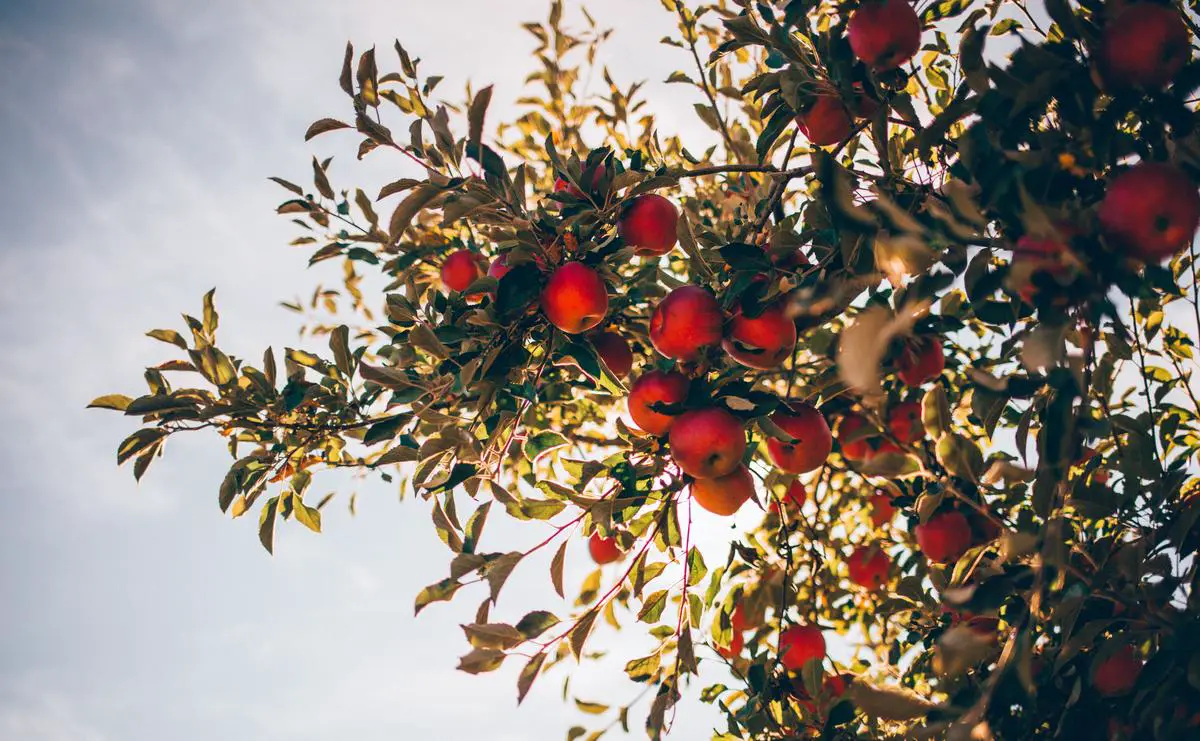
Why Pruning is Essential
Understanding the Significance of Pruning Apple Trees
Implementing a regular pruning schedule for your apple trees can have a profound effect on the tree’s health, structure, and ultimate fruit production. By selectively pruning branches and twigs, we can guide our apple trees towards an appealing shape and simultaneously optimize both the volume and the quality of the apples.
The Role of Pruning in Enhancing Tree Shape
The primary reason why pruning is essential is that it helps in molding and maintaining the tree’s shape following its natural branch formation. This process involves removing weak, overlapping, or superfluous branches that may hinder the growth of strong, productive branches. The ideal shape for apple trees is usually a central leader shape, with scaffold branches spiraling around the trunk. If maintained properly through pruning, this can promote even distribution of sunlight and air across all branches, in turn assuring that fruits grow and ripen evenly.
Boosting Fruit Production and Quality Through Pruning
Pruning directly supports enhanced fruit production and quality. By thinning out branches, more nutrients are available for the remaining branches and fruit buds, thus leading to larger and high-quality apples. Pruning also helps promote the growth of spurs, which are the main fruit-bearing parts of an apple tree. Moreover, it allows for better sunlight exposure and air circulation, both of which are primary elements for photosynthesis and thus, fruitful yield.
Preventing Diseases and Pests Via Pruning
By removing any diseased, injured or dying branches, pruning also plays an essential role in preventing the spread of diseases and pests that can severely harm an apple tree’s health and productivity. It’s often easier to spot these problematic areas during the dormant season when leaves have fallen off. Additionally, the cuts made during pruning can heal more quickly during this time, further preventing disease exposure.
What is the Optimal Time to Prune Apple Trees?
If you’re wondering when to prune apple trees, it’s important to note that timing is everything. The absolute best time to conduct this task is during the late winter or early spring, right before the tree begins to show signs of new growth and while still dormant. Doing so allows you to correct any misshapen growth before the growing season commences and minimizes the risk of disease spread, since most pests and diseases remain inactive during this time. However, it’s crucial to avoid pruning in late-season or summer, as it could encourage new growth that may not withstand the harsh winter conditions, resulting in potential harm to the tree.
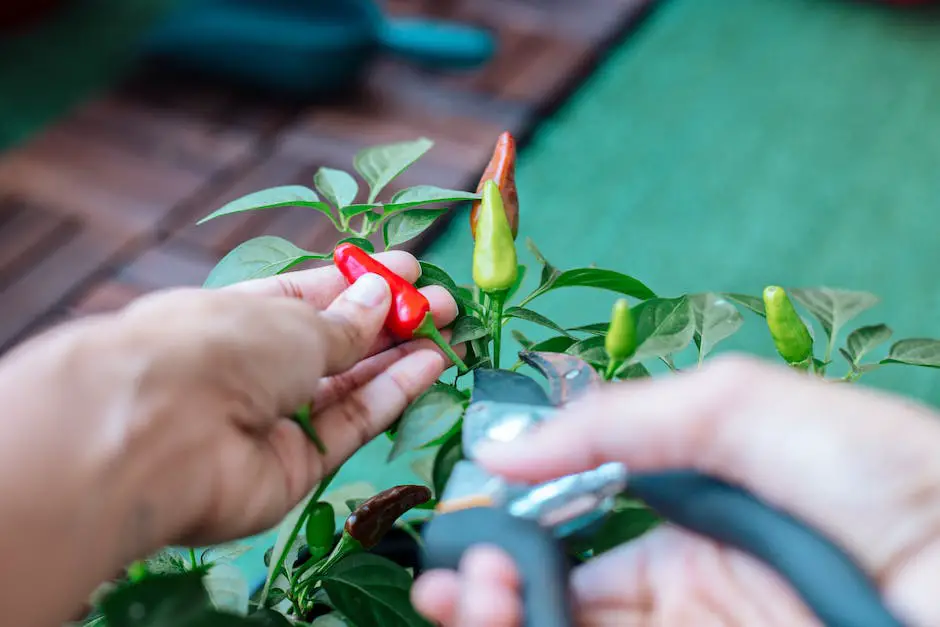
When to Prune Apple Trees
Why Prune Apple Trees?
Pruning apple trees is a crucial gardening chore that can significantly enhance your trees’ health, not to mention the quantity and quality of your apple yield. The main reason to prune is to create an optimal structure for the tree that permits sunlight to penetrate through the leaves, thereby promoting photosynthesis. Pruning also allows you to eliminate dead or diseased wood, stimulate healthy growth by reducing competition, improve air circulation to help fend off diseases, and maintain a pleasing tree shape. Plus, it makes harvesting a whole lot easier.
Best Time to Prune
The best time to prune apple trees is late in winter or early spring, just before the new growth starts but when the tree is still in dormancy. As a rule of thumb, you want to prune just before the tree breaks dormancy after winter, around February or March in most climates. However, avoid pruning during periods of freezing weather which could expose the tree to risk of diseases or pests. Warmer late-winter days are the best time to get out the pruning shears. This allows cuts to heal before the new growth starts, guarding against disease and insect transmission.
Summer Pruning
Another optimal time for pruning apple trees is the summer, specifically in July or August. Summer pruning can be used to slow down active branches, allowing certain parts of the tree to “catch up” in terms of growth. It’s also an excellent way to reduce the height of the tree if it is getting too tall to harvest easily. However, care should be taken to not remove more than 20% of the crown in any one year to avoid shocking the tree.
Pruning Tips
Always make sure to use clean tools (preferably disinfected with a 10% bleach solution) before making any cuts to avoid introducing any disease or pests into the tree. When pruning, make the cut at a slight angle about 1/4 inch above a bud that is facing the direction you want that branch to grow.
The Impact of Pruning
It’s also worth noting that under-pruned apple trees will still produce fruit, though the quality and quantity might be lower. By contrast, over-pruned trees may not produce fruit for several years. Therefore, balance in pruning is key to maintaining the fruit production of the apple tree.
Understanding Pruning Techniques for Different Apple Tree Ages
Appropriating pruning techniques based on the tree’s age is instrumental in apple tree care. For young apple trees, more frequent and heavier pruning is favorable. This helps delineate shape, promote structure development, and ensure vigorous growth. In contrast, older apple trees require only light, annual pruning to retain their shape and vitality.
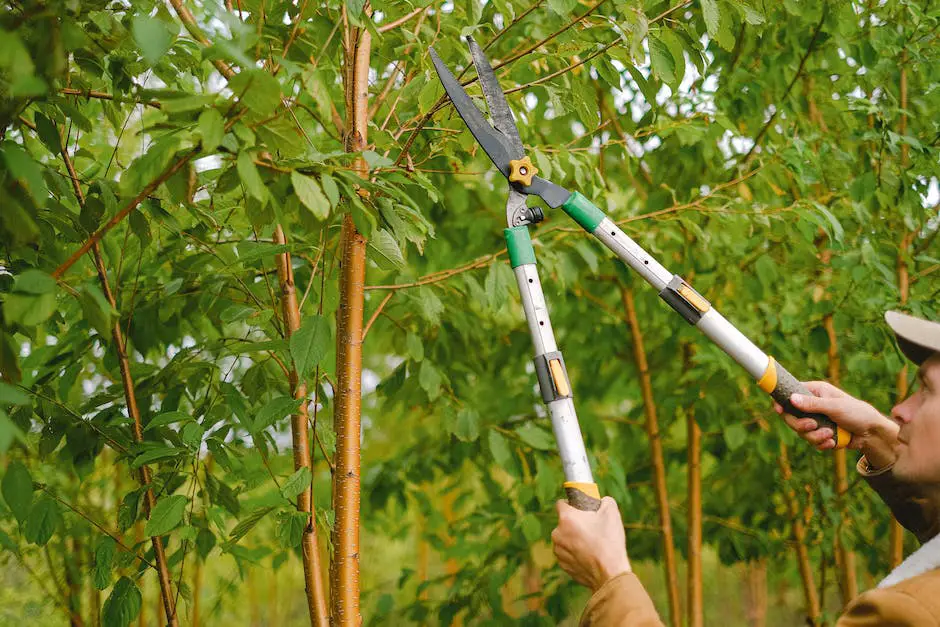
Pruning Techniques and Safety Measures
Identifying the Optimal Time for Pruning Apple Trees
The optimal time to prune apple trees is typically late winter or early spring, specifically between late February and early April. This period conveniently falls after heavy winter conditions that could damage the tree and before the sprouting of new growth. Timely pruning in this window helps curb the spread of disease and enables quicker tree recovery. However, one should refrain from pruning when temperatures drop below freezing as it could be detrimental to the tree.
Pruning Techniques for Apple Trees
When pruning apple trees, there are several techniques that can be employed, including thinning cuts and heading cuts. Thinning cuts involve removing branches back to their point of origin. This technique is often used to open up the interior of the tree to improve light penetration and air circulation. It also helps to maintain the natural shape of the tree.
Heading cuts, on the other hand, involve cutting a branch or stem back to a bud or to just above a lateral branch. This method encourages the growth of lower branches and is often used to stimulate growth in underdeveloped areas of the tree. For apple trees, a balance of both these techniques is recommended for maintaining tree health and productivity.
Safety Measures and Necessary Tools
Adhering to safety measures while pruning is crucial in order to prevent injury. This includes wearing gloves to protect your hands, safety glasses to guard your eyes from falling debris, and sturdy shoes to prevent slips and falls. If you are pruning tall trees, make use of sturdy ladders or long-handled tools, always being aware of power lines, which can present a serious risk.
The necessary tools for pruning include bypass pruners for small branches up to a half inch in diameter, lopping shears for branches up to two inches in diameter, and a pruning saw for larger branches. These tools should be kept sharp for clean cuts and sanitized between uses to prevent the spread of disease.
Proper Care after Pruning
After pruning your apple tree, it’s necessary to take some steps to ensure their steady recovery and subsequent growth. This can involve applying tree paint on larger cut surfaces to prevent diseases and pest infestation. However, small cuts should be left to heal naturally. Additionally, make sure your tree continues to receive appropriate water, as well-pruned trees will grow more in the spring. It’s also necessary to remove all cuttings from around the base of the tree to prevent disease.
It’s important to remember that apple tree pruning is an annual upkeep task that is crucial for maintaining a productive and healthy tree. By following tried-and-true methods, taking proper safety steps, and providing the right care, apple tree pruning can yield bountiful results.
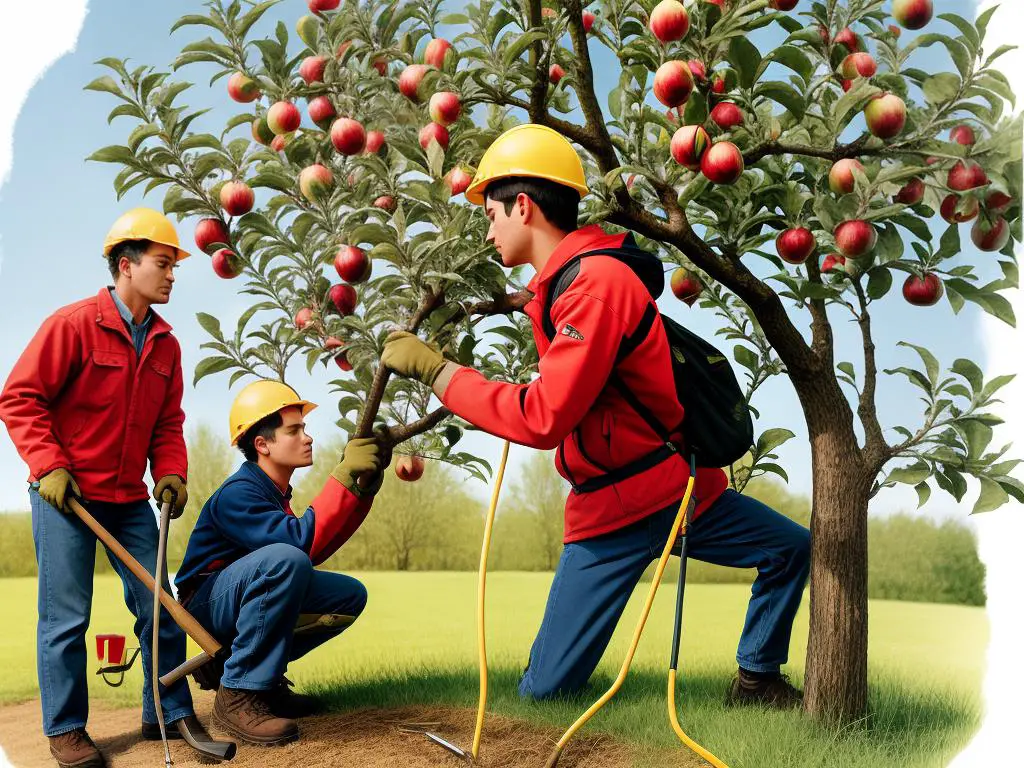
Pruning Maintenance and Care
Optimal Time to Prune Apple Trees
The ideal time to prune apple trees generally falls in late winter or early spring, while the tree is in its dormancy phase and before it starts new growth. Typically, this timeframe is between February and April. During the winter, the sap isn’t running within the tree, which allows it to better withstand the pruning process. In addition, cuts made during the late winter or early spring allow the tree to heal quickly with the advent of spring’s accelerated growth.
Short-term Care After Pruning
Short-term care after pruning is crucial in aiding the recovery of the apple tree. Immediately after pruning, it’s essential to clean up and remove all the pruned branches and foliage to prevent any potential pest or disease problems. Leaving the cuttings on the ground could lure insects and facilitate disease transmission. If any significant wounds have been created during pruning, apply a protective sealant to help protect the tree and aid in the healing process. After pruning, water the tree thoroughly, but there’s no need to fertilize the tree immediately after pruning as this can stimulate unnecessary winter growth.
Long-term Maintenance Strategies for Pruned Apple Trees
For long-term maintenance and care, nurturing the pruned apple tree involves a consistent check on tree health, yearly pruning for shape and size control, and disease prevention. Monitor the tree’s health by checking for new growth and signs of pests or disease regularly. A well-pruned apple tree has better air circulation and sunlight penetration, which helps keep the tree healthier and productive. A balanced seasonal fertilizer can be applied, taking care not to over-fertilize, which can lead to too much vegetation instead of fruit.
Disease Prevention After Pruning
Preventing disease in your pruned apple trees becomes easier once proper pruning has been conducted, improving sunlight and airflow. However, there are still important preventive measures to take. Regularly examine your trees for early signs of diseases such as unusual spots on leaves or bark, cankers, and fungal infections. Spray the tree with a dormant oil or a lime sulfur spray during the late dormant season to control overwintering insects and diseases. During the growing season, consider an approved fungicide or antibacterial spray, particularly in wet conditions that favor disease development.
Care Across Seasons
Protecting your apple tree across the seasons is crucial. In drier summer months, ensure the tree is well-watered to support fruit’s growth. During fall, clean all fallen leaves and fruit from under the tree to prevent pests and diseases that could overwinter in this debris. When winter arrives, prune the tree and protect it from rodents by either using repellent products or wrapping the trunk with a tree guard. Using these techniques, your apple tree can deliver a bountiful, healthy harvest year after year.
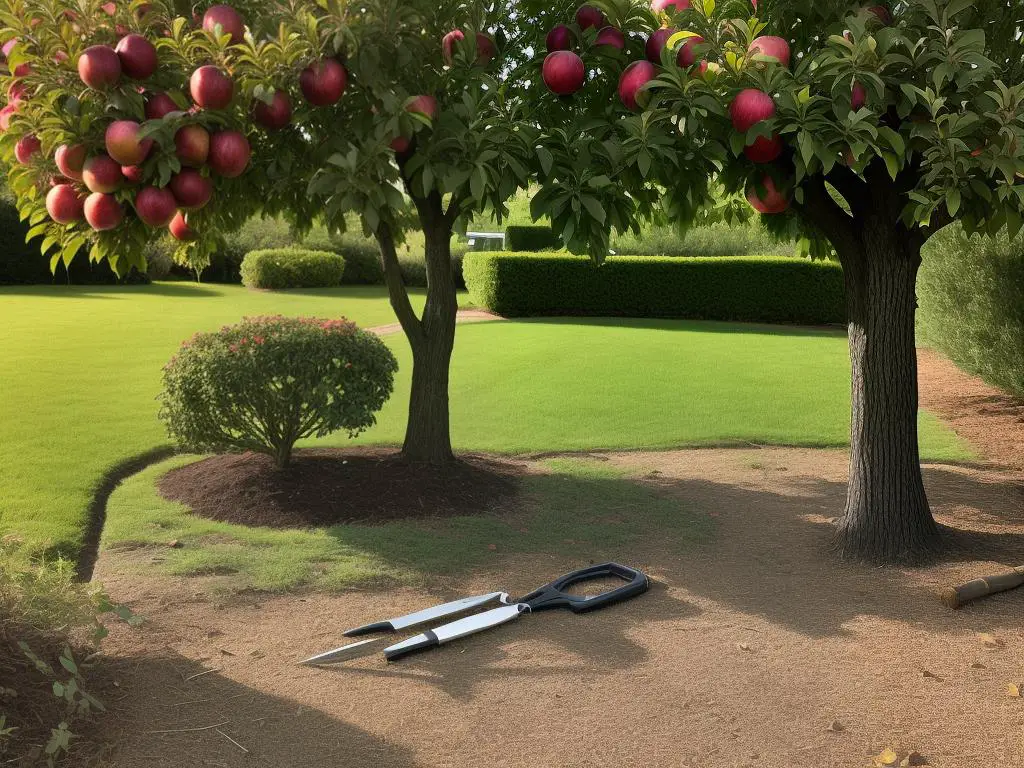
Having immersed ourselves in the varied dimensions of apple tree care, it is clear that pruning should not just be viewed as an optional, sporadic task, but a critical cultivation practice aimed at optimizing the tree’s health and fruit production. It will take some time, practice, and patience to master, but the effort undoubtedly yields rewarding results. The journey into apple tree pruning presented in this guide acts as a beacon, offering direction to apple growers, both experienced and novice, in producing trees that are not only attractive and healthy but also abundant in high-quality fruits. The knowledge shared here provides you with the tools you need to contribute positively to the lifecycle and productivity of these lovely, generous trees.
